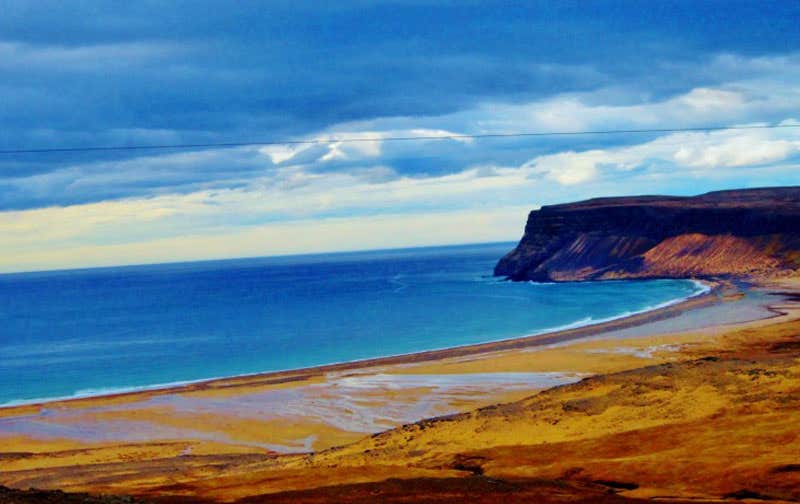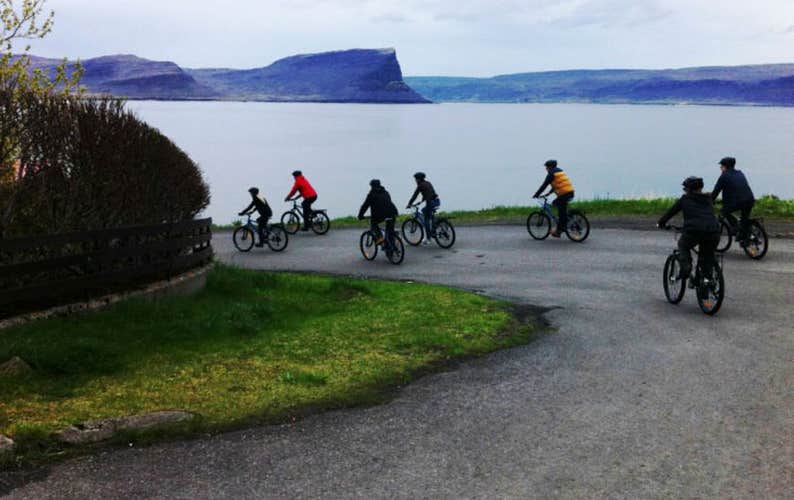Description
Summary
Description
Visit the golden sands of Rauðasandur on this fantastic biking tour of the Westfjords. If you’re staying in West Iceland and are looking to keep active on your holiday while witnessing spectacular coastlines and mountainscapes, this is the adventure for you.
Your tour begins as you meet up with your local guide in the town of Patreksfjörður within the fjord of the same name. Once you have been briefed about the route and provided with your bike and helmet, you’ll begin by cycling past natural vistas that are teeming with birdlife and towards the shipwreck Garðar.
After learning of the stranded steel boat’s unfortunate history, get ready for a workout as you cycle uphill and over the mountain Skersfjall. This route is moderately challenging in all the right ways, and once you reach the top, you’ll be facing both sharp curves and a spectacular view.
You will descend the mountain on the other side, finding yourself situated directly at the long stretch of golden sand that characterises the famous Rauðasandur beach. While a lot of Iceland’s shores are black due to the island’s volcanic nature, this special coast gets its velvet colours from pulverised scallop shells.
The scenery is breathtaking, where the blue of the Atlantic Ocean contrasts sharply with the black surrounding cliffs and fair-coloured sand. The steep sea cliff that connects to the beach is none other than Látrabjarg, the westernmost tip of Iceland and the largest bird cliff in Europe. Between April and September, this stunning precipice is teeming with migrating puffins.
Enjoy the views and drinks at the local Café, before either cycling back or, if you’ve had enough exercise for one day, catch a ride back to town with the car, with plenty of time to visit the town’s geothermal swimming pool to end your day perfectly.
Don’t miss out on this scenic cycling tour in the Westfjords of Iceland. Check availability by choosing a date.













